楽 雅臣/Raku Masaomi
彫刻家の樂雅臣(楽雅臣、1983~)は、安土桃山時代から450年以上続く樂焼の窯元に生まれました。陶芸を生業とする家で育った樂は、父である十五代吉左衛門(樂直入・らくじきにゅう、1949~)からわたされた粘土で兄の十六代吉左衛門(1981~)とともに遊ぶなど、自身もまた子どもの頃からものづくりに親しんでいました。そのような環境で、なにかをつくり、表現する仕事をごく自然に志しつつも、一子相伝の樂家において自分が後継者となる身ではないことを感じていた彼は、進学した東京の美術大学の最初の授業で石彫に魅了され、その道へと進んでいきます。樂茶碗の釉薬には京都の加茂川などで採れた石が使われており、それが加工される様子を幼少期に間近で見ていたことも、樂が石という素材になじみやすかった理由の一つと考えられます。
2008年に東京造形大学院美術研究領域造形研究科を修了すると、個展やグループ展にて独自の彫刻作品を制作、発表していきます。黒御影石、中でも「ジンバブエブラック」(アフリカ・ジンバブエ産)を好んで使用しており、大学在学中に初めてその素材でつくったのが、ペリカンのくちばしをモチーフとした【創造のはじまり】(2004年)でした。ペリカンがくちばしで池の水をかき回している姿から日本神話の「国生み」を連想して生みだされた本作は、のちの代表作となる「輪廻」シリーズや「Stone Box」シリーズのルーツとなっています。20代の頃に制作した「輪廻」では、黒御影石が持つ独特の質感や重厚感に加え、割肌を活かした風合いにより、生と死の循環、自然の摂理による移り変わりが表現されています。30代から始まった「Stone Box」シリーズでは、素材は透過性のあるオニキスに変わりますが、モチーフにはふたたび鳥のくちばしを採用しています。木の実を食べた鳥が移動した先の土地で種の混じった糞をし、そこから新たな命が芽吹くという一連の流れから、鳥のくちばしを「幸せを運ぶ象徴」と捉え、そのイメージを踏まえて制作されるようになりました。また、くちばしが上下にひらくことから、作品も開閉できる箱のような形式をとり、目に見えない内部に対し、鑑賞者の意識や想像力が膨らむような工夫が施されています。こうした、自然界の循環と作品そのものの奥行きが、いずれの創作物においても一貫しているのが特徴です。
自然物を無理にコントロールせず、石が持つ表情や生命力を活かそうとする樂の姿勢は、まず割肌をつくることから始まるその創作過程に表れており、それは人工物でありながら自然の美を内包する樂焼の佇まいにも通じています。また、作品自体が後世に残るか否かではなく、時間の経過とともに自然に還っていくことを想定しているものづくりは、持続可能な社会を目指す現代において多くの示唆を与えています。40代に入った現在も石と真摯に向き合いながら、自身の想像を超える新しい作品づくりに挑戦しています。
Raku Masaomi (1983-), a sculptor, was born into the Raku family, which has been producing Raku ware for over 450 years since the Azuchi-Momoyama period. Growing up in a family of potters, Raku was familiar with creating things from a young age. He played with clay given to him by his father, the 15th-generation Kichizaemon (Raku Jikinyu, 1949-), along with his older brother, the 16th-generation Kichizaemon (1981-). In such an environment, it was natural for him to aspire to a profession involving creation and expression. However, knowing that he would not become the successor in the family’s single line of descent, he was captivated by stone carving in his first class at an art university in Tokyo and decided to pursue that path. One reason Raku found stone to be a familiar material may be that Raku tea bowls use stones for their glaze, collected from places like the Kamo River in Kyoto, and he had observed this process of transformation up close from a young age.
After completing his studies at the Fine Arts Graduate School of Tokyo Zokei University in 2008, Raku began creating and exhibiting his unique sculptural works in solo and group exhibitions. He prefers to use black granite, particularly “Zimbabwe Black” from Zimbabwe, Africa. During his university years, his first work using this material was “The Beginning of Creation” (2004), inspired by the image of a pelican’s beak. This work, inspired by the sight of a pelican churning water in a pond with its beak and reminiscent of the Japanese myth of “Kuniumi” (the birth of lands), later became the root of his representative “Reincarnation” and “Stone Box” series. In his twenties, Raku created the “Reincarnation” series, which expresses the cycle of life and death and the transitions driven by nature’s laws, using the unique texture and weight of black granite and the rugged quality of its split surfaces. In the “Stone Box” series, which began in his thirties, he shifted to using translucent onyx but returned to the motif of a bird’s beak. He regards the bird’s beak as a “symbol of happiness”, inspired by the natural cycle where birds eat nuts, move to new lands, and drop seeds that sprout new life. Based on this image, he began creating his works. His works are designed to open and close like a bird’s beak, taking the form of a box, and are crafted with thoughtful details to encourage viewers to expand their awareness and imagination toward the unseen interior. The consistent theme throughout his works is the cycle of nature and the depth inherent in each creation.
Raku’s approach to emphasizing the expression and vitality of stone without forcibly controlling natural elements is evident from the beginning of his creative process, which starts with making a split surface. This approach resonates with the essence of Raku ware, which, while man-made, embodies the beauty of nature. Moreover, his artmaking, which contemplates the pieces returning to nature over time rather than lasting through the ages, provides insight in today’s context of pursuing a sustainable society. Now in his forties, he continues to engage deeply with stone, challenging himself to create new works that go beyond his imagination.
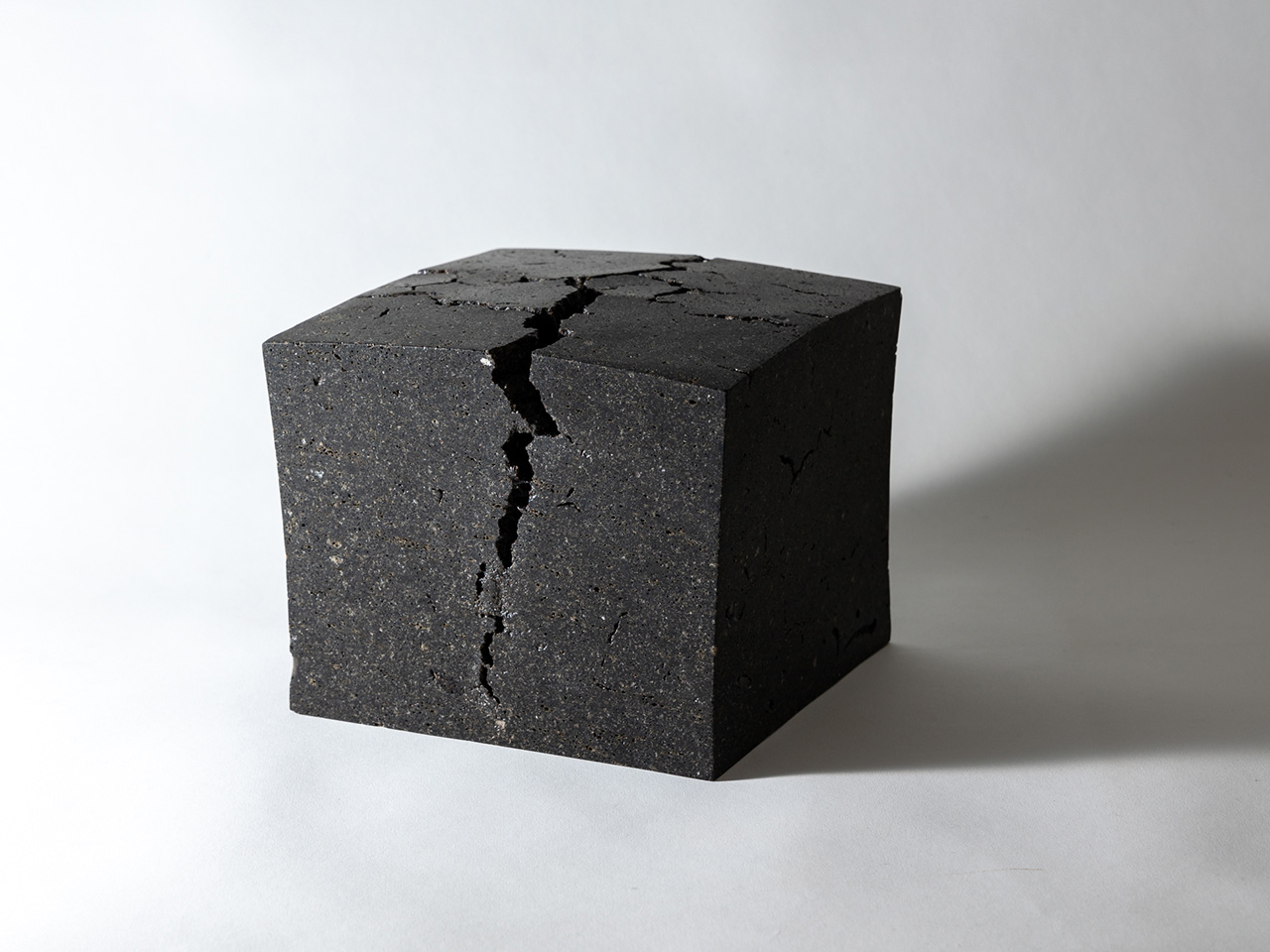
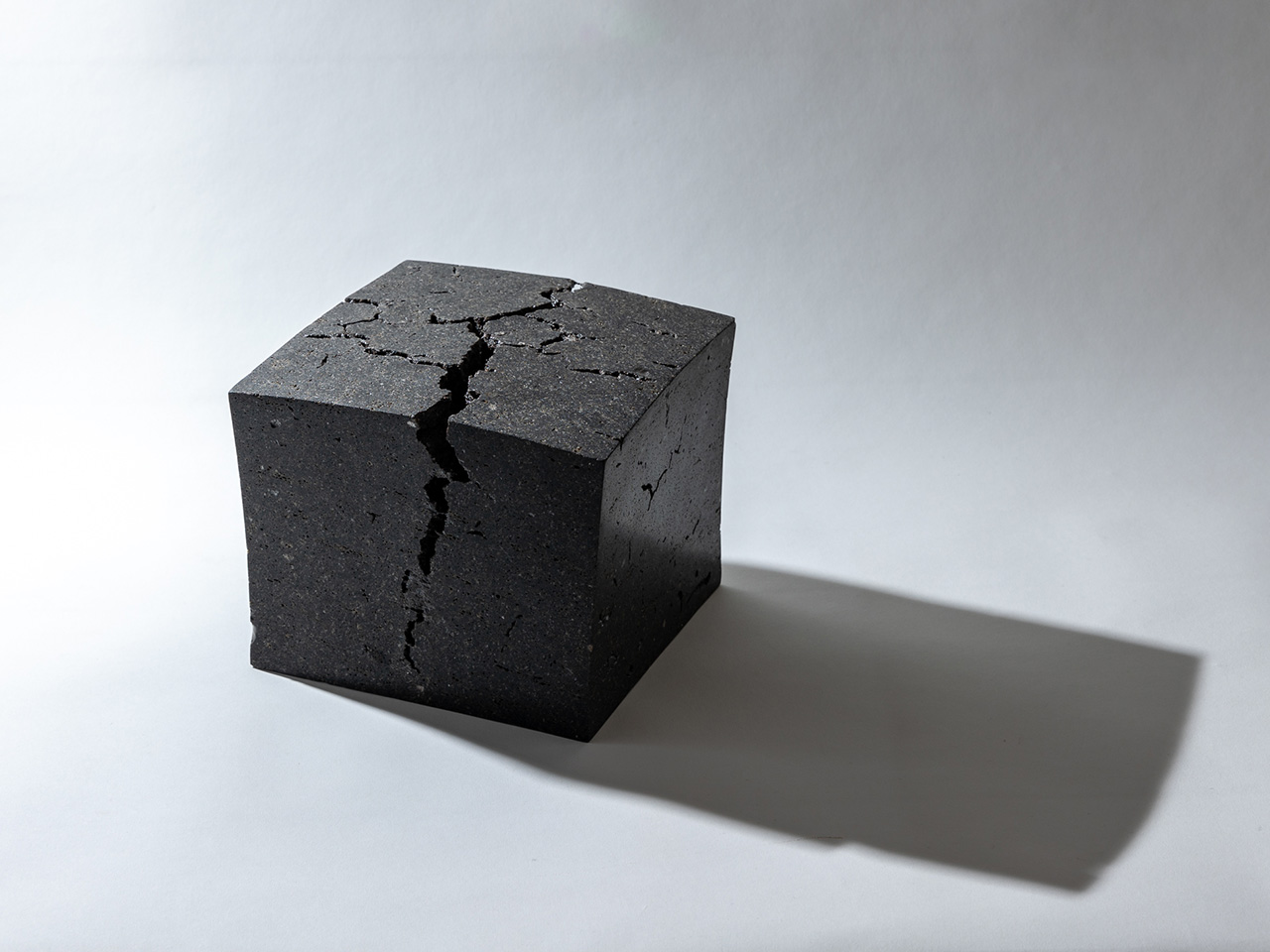
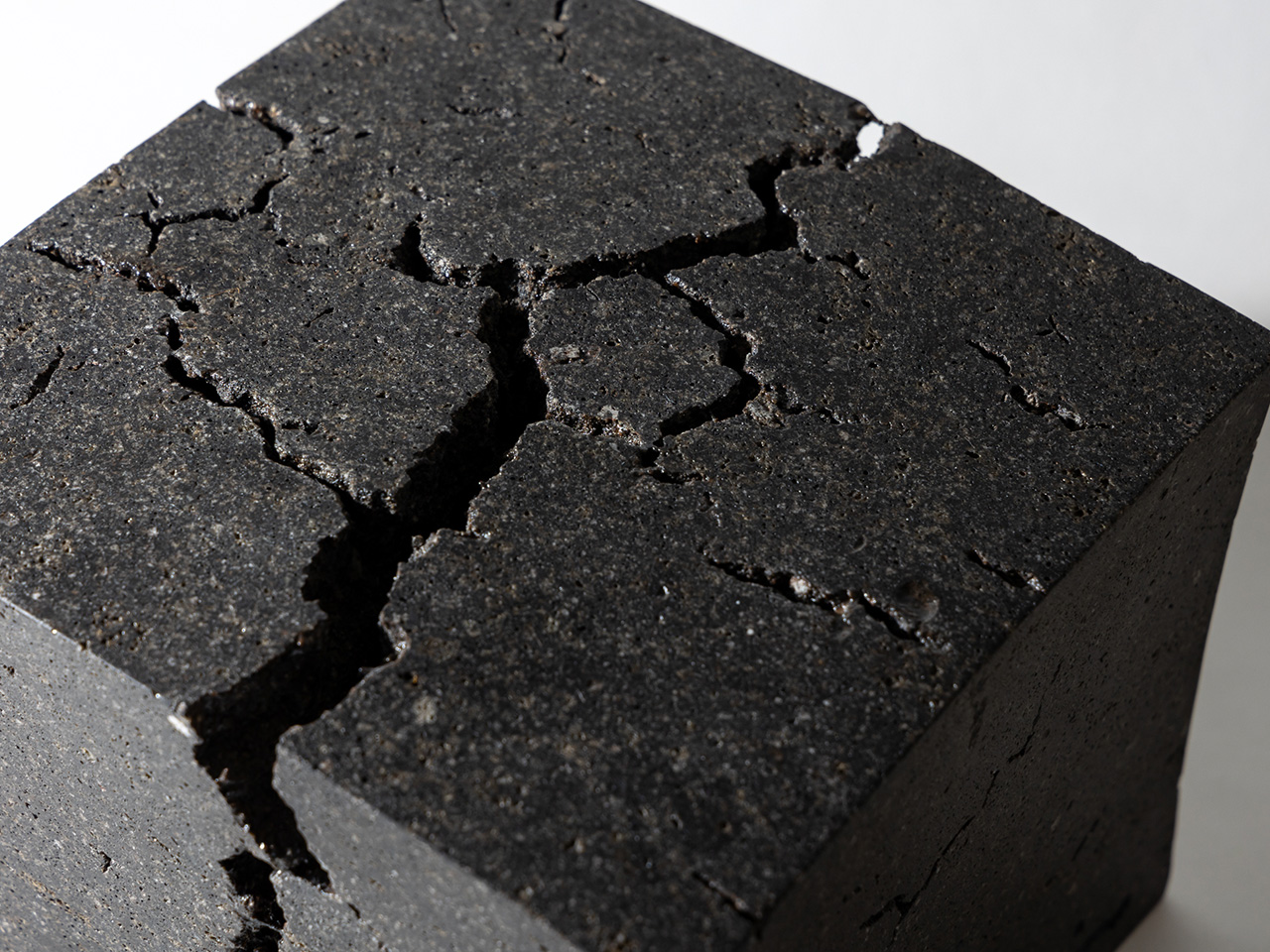
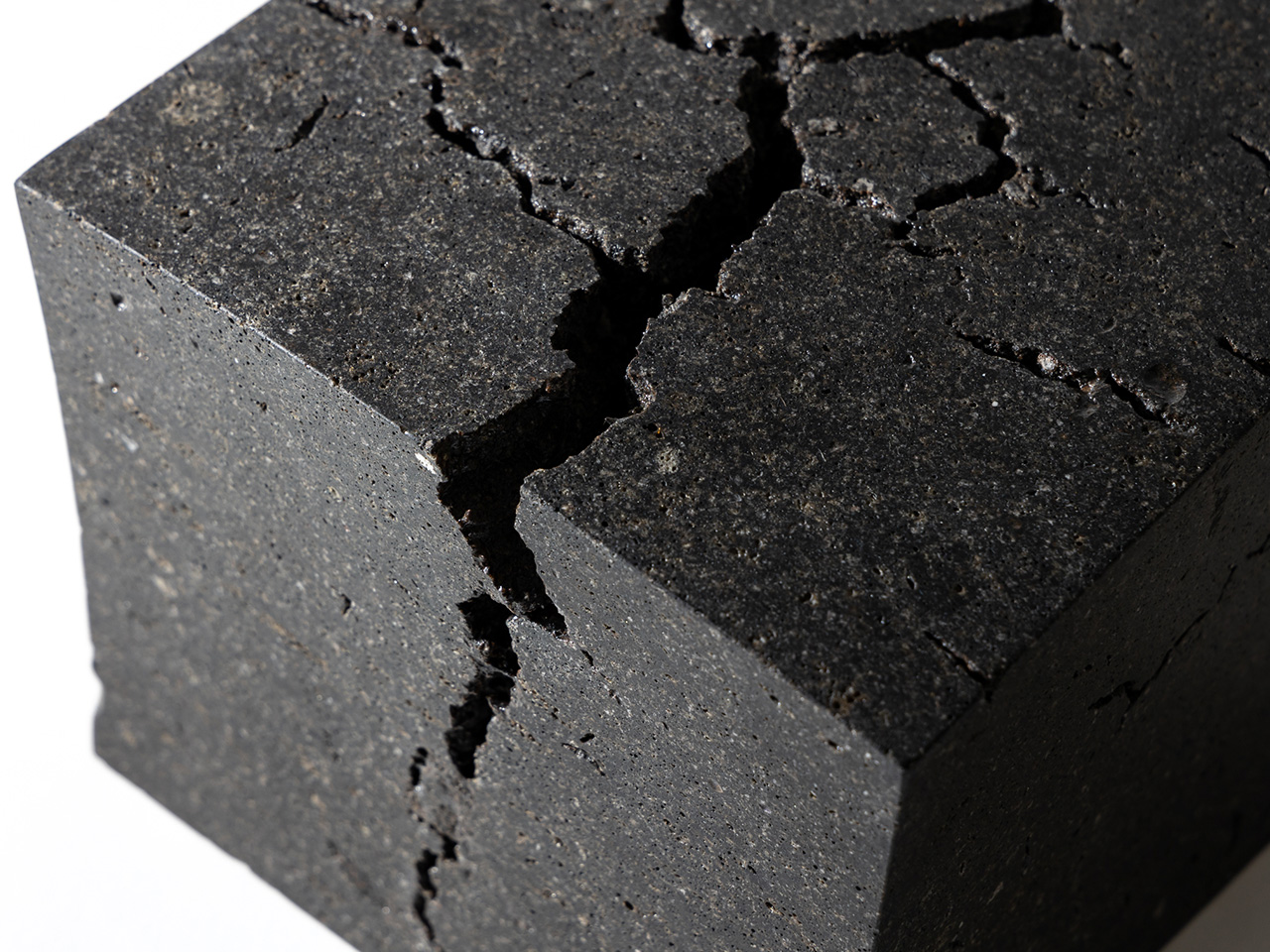
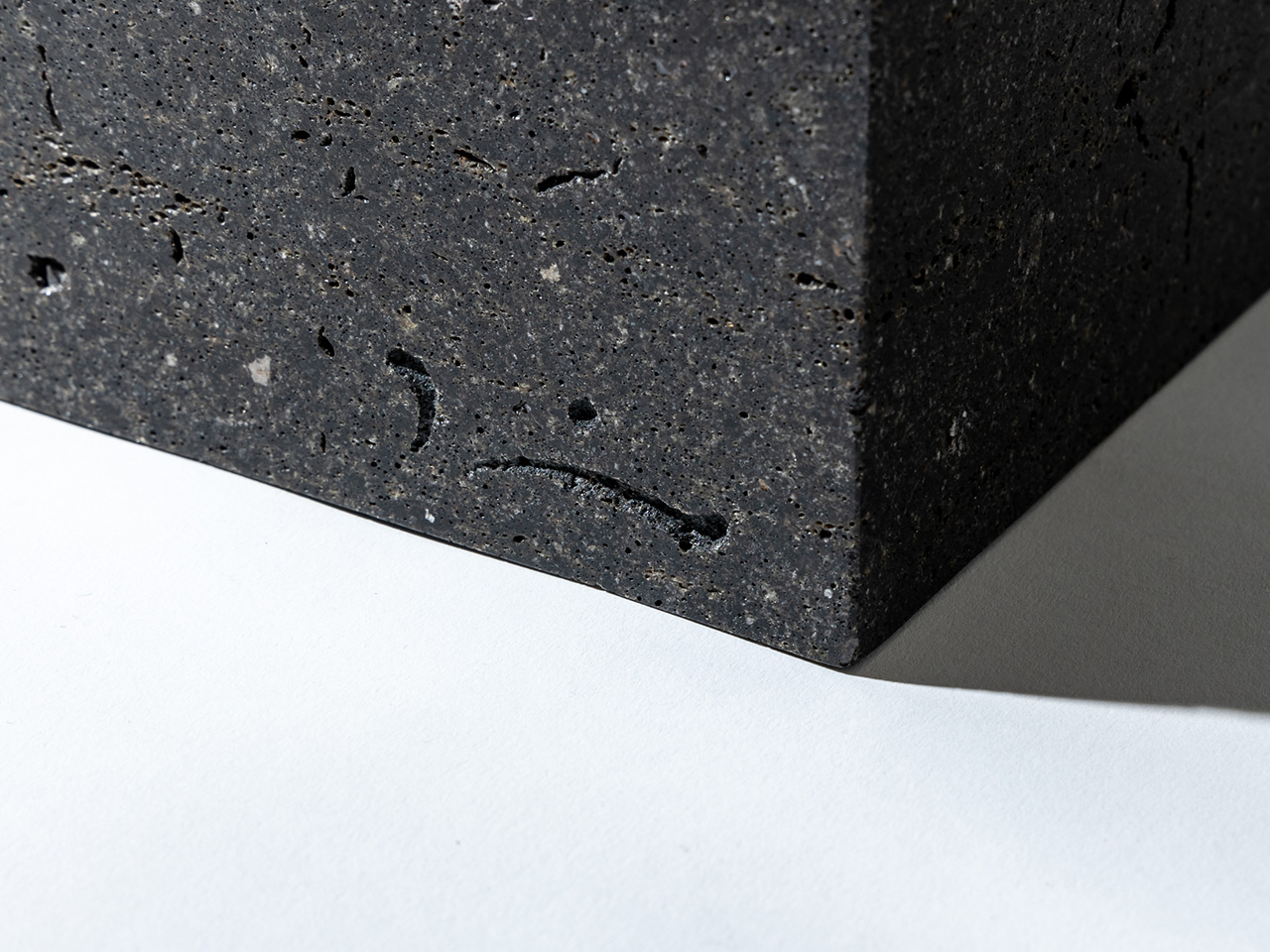
作品名:CUBE Crack 2023
サイズ:H15.5×W18cm(2023年 神武岩 石彫)
価格:非売品
価格は税抜き表示です

